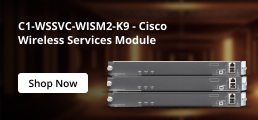What Is A Modem And How Does It Work?
Table of content
Introduction:
In this era of digitalization, all of us are familiar with the Internet and rely on it for most of our activities, including business, education, entertainment, and more. If you have curiosity about the ever-changing scenarios in your surroundings, chances are you have a number of questions about how your computer receives and sends data over a telephone line and how data travels through ISP to your devices. That’s where ‘What Is A Modem and What Is The Role Of A Modem’ becomes a must-read for you. In this blog, we shed light on aspects, types, and other characteristics of a modem. So, let’s deep dive into this informative article and fill your curiosity with authentic and study-driven insights on modems.
What Is A Modem:

Contraction of the words ‘modulator’ and ‘demodulator’, a modem is typically used to send digital data over a phone line. At its core, a modem is a hardware device that allows two computers to communicate with one another over the internet. It modulates digital information/signals into analog signals and demodulates them after reaching their final destination. In other words, a modem works like a translator that converts digital data into a form that is intelligible for your devices, and this way, it connects your devices to the internet to help you watch your favorite movies, market your business, and communicate with people around the globe.
The first ever modem was introduced by AT&T Corporation in 1959 known as Bell 101 dataset/modem. Its speed was around 110bit/s. As time went on, the modem witnessed various impactful landmarks throughout its journey. Today’s modems provide even faster and more reliable connections and speed along with some additional features, such as built-in WiFi routers and security features.
How Does A Modem Work:

First of all, a modem functions by modulating digital signals into analog forms and then converts them back into digital form in order to make them understandable for a computer. Secondly, It is crucial to know two fundamental components of the modem when we are talking about its working;
Modulator:
It converts digital signals and information into analog form so that it can travel through the internet.
Demodulator:
It converts analog signals back into digital signals so that a computer can understand them.
To summarize a long story in a nutshell, a quick process of modem is mentioned below:
Data Generation:
The computer transmits digital signals or data.
Modulation:
Modem takes these digital signals and converts them into analog form. This process is known as modulation.
Transmission:
The modulated signals travel through the communication line to the receiving modem.
Demodulation:
The receiving modem converts analog signals back into digital signals. This process is known as demodulation.
Why do you need a modem?
A simple answer is that you need a modem when you want an internet connection in your home or office. It is essential for translating data between your internet provider’s connection and your home network. Internet providers use various mediums like coax cables, telephone lines, and satellite communications to transfer data. Modems translate these signals into Ethernet-ready data. Cable and DSL use RF carrier waves, while fiber internet uses laser or LED pulses. The modem sends the translated data to a router via an Ethernet cable, which then distributes it to devices through Ethernet or Wi-Fi.
Modem vs Router In a Glance:
| Modem | Router |
| Has fewer Ethernet ports than a router | Has more Ethernet ports than a modem because it is used to connect multiple devices to the Internet |
| Has a public IP address | Has a private IP address |
| Uses a wide area network (WAN) | Distributes on a local area network (LAN) |
| Takes digital Internet signals from the ISP and provides an Internet connection | Takes the Internet connection from the modem and sends it to wireless devices |
| Fundamental to getting an Internet connection | Allows multiple devices to connect to the Internet at the same time |
| Often connected to a router to distribute signals to multiple devices | Needs to connect physically to a modem with a cable; can be wired or wireless |
Types Of Modem:
In general, there are two types of modems: DSL and Cable modems. However, things take a turn when you dive deep into the topic. Modems are of various types, and each type of modem has its own specifications and functions. In the present time, different types of modems for the internet are used, some of which are going to be discussed below:
Cable Modem:
- Connects to the internet through a coax cable.
- Provides speed up to 1Gbps.
- Limited by the distance from the cable jack.
- Less expensive as compared to others.
- Easily accessible.
DSL Modem:
- Used with local telephone lines.
- Can connect a number of computers through many Ethernet ports.
- Speed depends on the distance and quality of the telephone line.
- A little bit expensive but is reliable and super-fast in connectivity.
Fiber-Optic Modem:
- Offers high-speed internet access.
- Uses fiber cables for connections.
- Provides speed up to 10Gbps.
- Transmits data over long distances without lowering the quality or speed.
- More reliable in contrast to other modems.
- Engineered to handle future demands.
Satellite Modem:
- Connects through a satellite dish.
- Provides a speed of up to 25 Mbps.
- Give internet access to any corner of the world.
External Modem:
- Linked in external areas of the computer through a cable.
- Easy-to-manage.
- Offers high-speed data transmission.
- Prevent interruption in network connectivity.
Internal Modem:
- Installed on the motherboard of a computer.
- Data transmitting rate is slower in these modems.
- Cannot move as they are not portable.
- Used for dedicated computers.
Conclusion:
As we have gone through some key aspects of a modem, it would not be an exaggeration to confess that you have got some significant information about different types of modems that were unknown to you before. Besides, we have given insights regarding modem vs router to let you know about when and where you can use them. Still, if you have more queries regarding such topics, keep visiting buyrouterswitch to get insightful articles to enrich your mind with authentic knowledge and information. Thank you!
Frequently Asked Questions:
What does a modem do?
A modem basically connects your home to the internet service provider through a coaxial cable. It takes signals from the ISP and transforms them into a type of signal that your device can understand easily.
What does a modem look like?
Modems are usually like small square black boxes in appearance. Usually, they have two to four antennas but it is not applicable for all types of modems. Besides, a modem has two or four ethernet ports and one or two USB ports.
How to connect the router to the modem?
Attach the power cord of the modem to an electrical outlet first, and then attach the other end to the modem. Second, attach one end of an Ethernet cable to the router’s Wide Area Network (WAN) port and the other end to the modem’s back. Lastly, attach the other end of the router power cord to the router after plugging it into an electrical outlet.




 Catalog
Catalog





















































































































 (800) 870-9487
(800) 870-9487